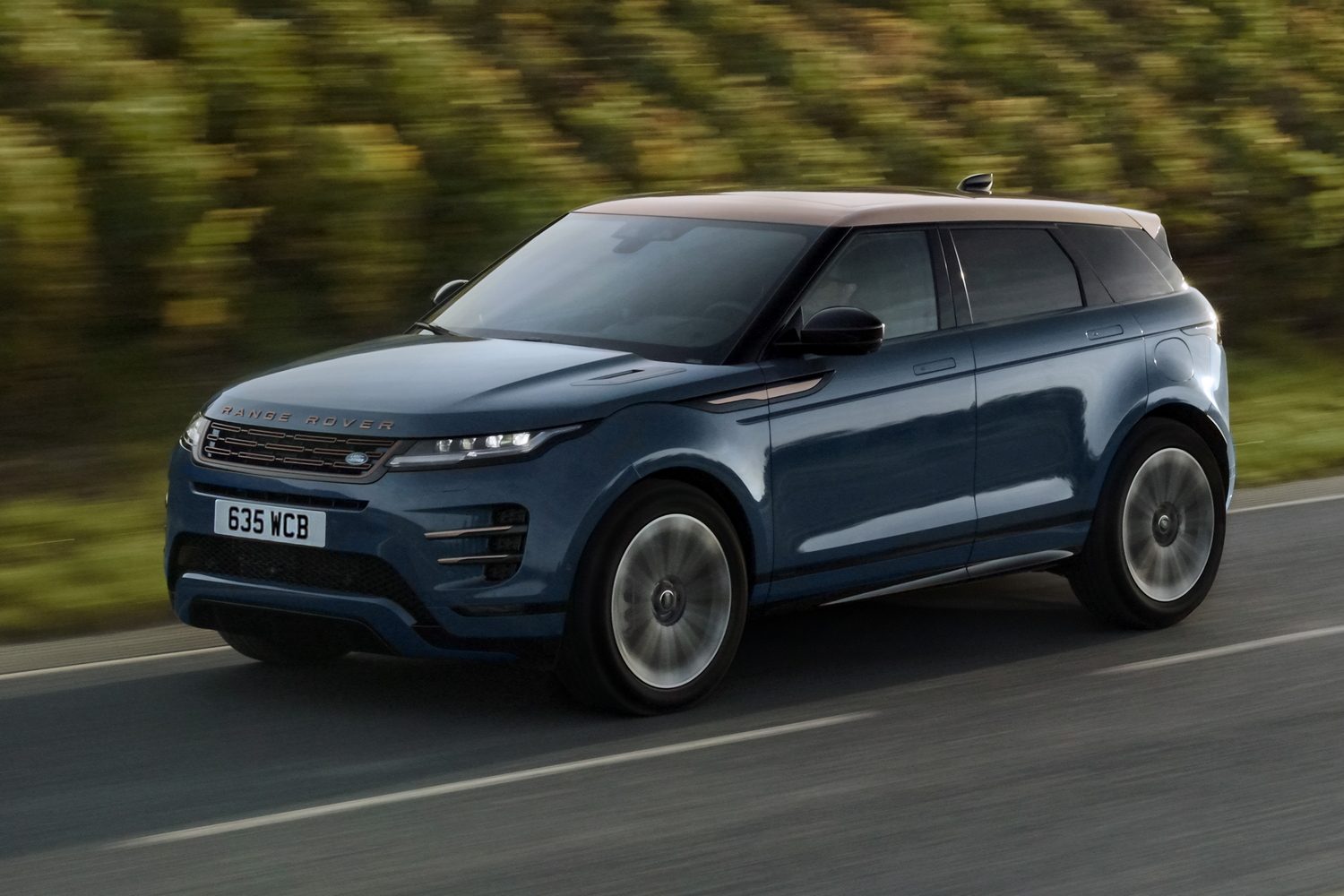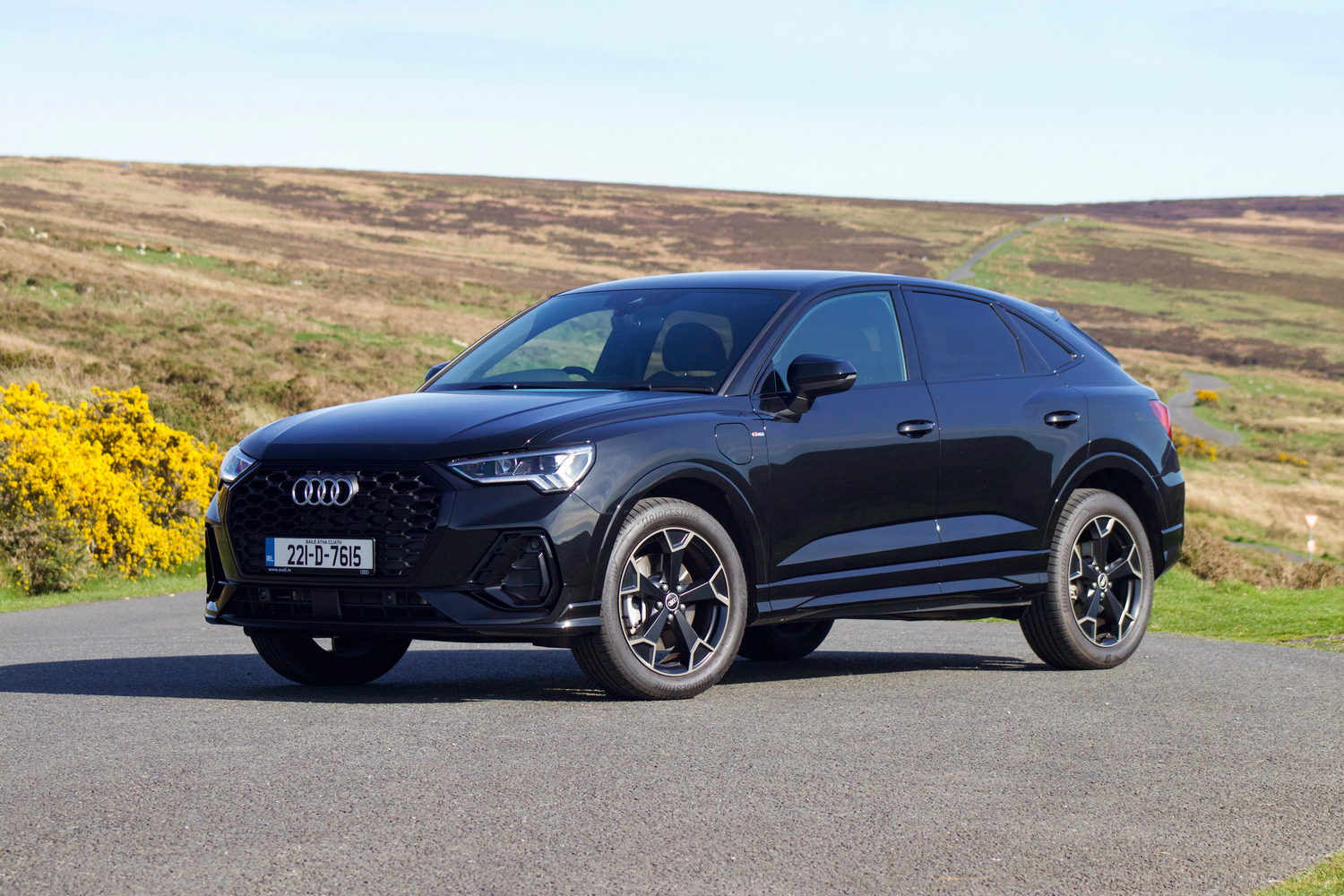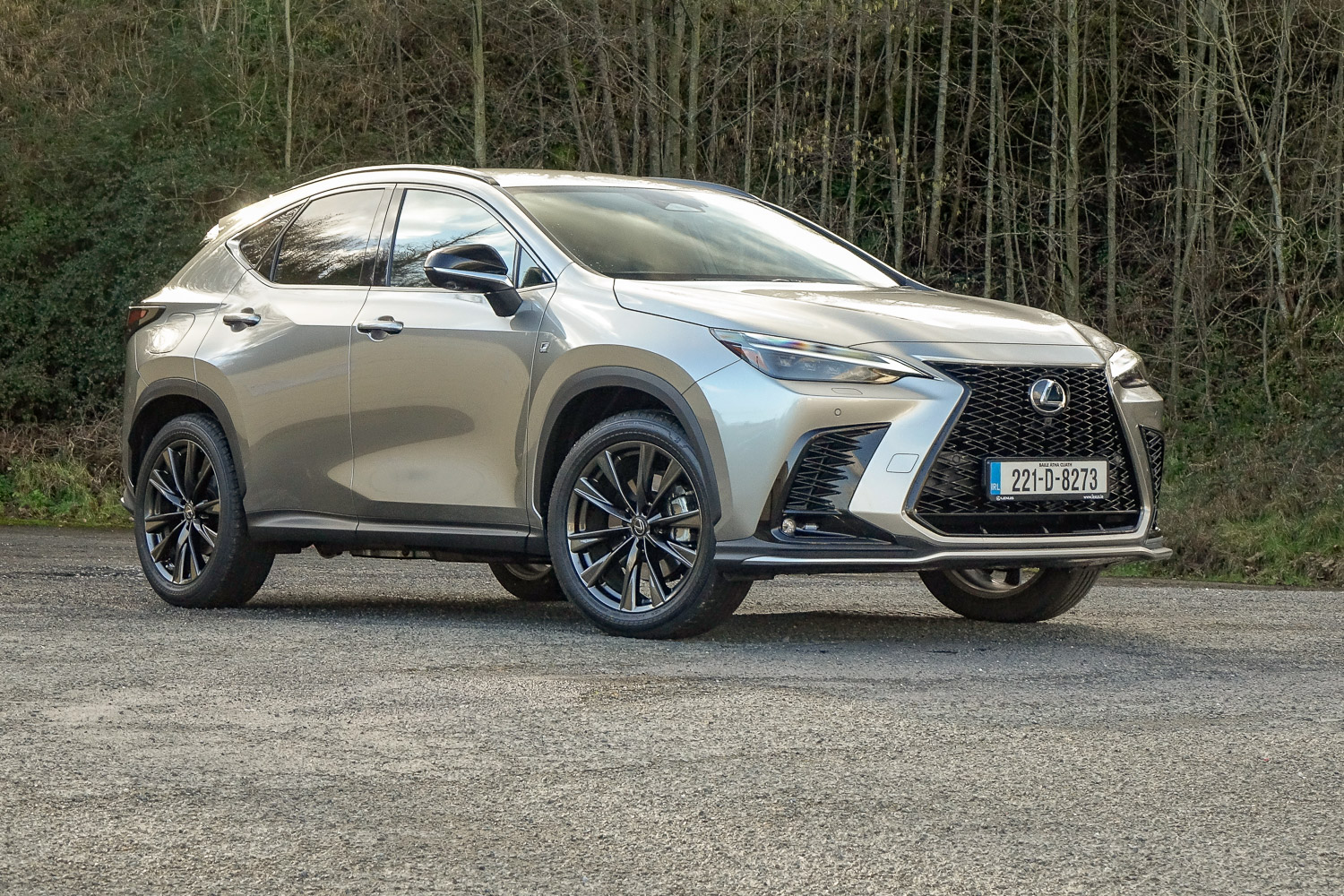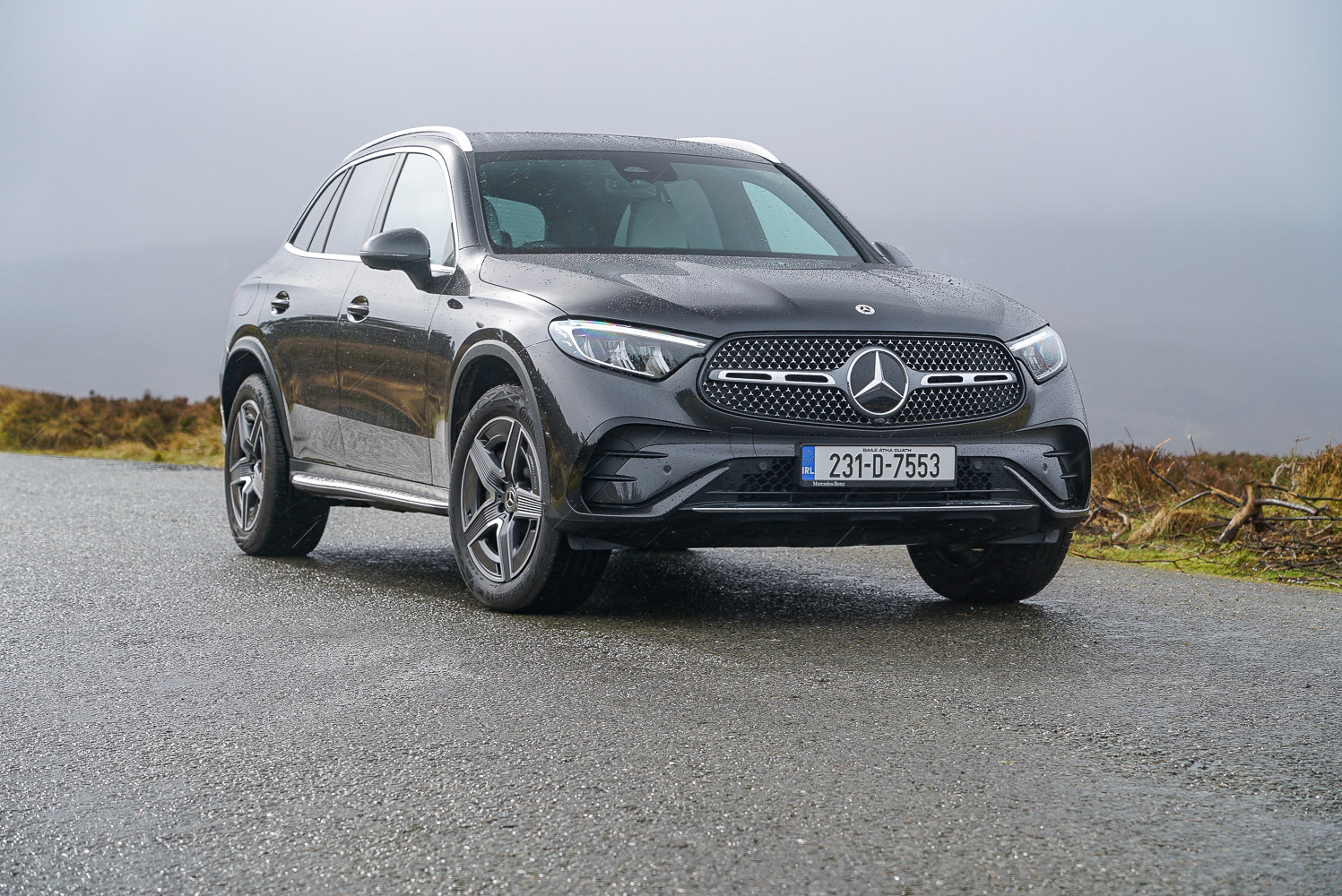It may be the entry point to the Range Rover family but a mid-cycle update for the second-generation Evoque ensures that its interior is as modern as the company's larger models'. For the 2024 model year, the Evoque features a simplified cabin and updates to the plug-in hybrid powertrain that deliver greater efficiency and better rear-world electric driving range.
In the metal
It may require a second glance to spot what's changed with the outward appearance of the Range Rover Evoque, but when a model has proven to be as successful as this has, it's understandable that its designers don't want to tinker too much with the formula. The slender headlights are now updated to feature the latest Pixel LED technology that can dynamically shade sections of illumination to avoid dazzling other drivers. Form joins function with these new units which have an almost jewel-like appearance with four modules within each light.
A new front grille design aligns the Evoque's face with the larger models in the range, adopting a more horizontal approach to supersede the wave pattern of its predecessor. It's a subtle change that will almost go unnoticed. Minor bumper revisions include the addition of two horizontal bars to the outer vent areas on Dynamic SE versions upwards. The same goes for the non-functional vent garnishes on the bonnet.
The base Evoque runs on 18-inch wheels, with higher-spec versions running on 20-inch rims that suit the car's aesthetics better, especially with a clean side profile that includes flush-fitting door handles. If you feel like steering away from the safe, predictable white, black or grey, a broad colour palette is available. However, most paints will cost from €1,255 to €1,865, and a black exterior pack that adds a generous helping of gloss black (including the roof and badges), will cost a further €1,405. The latter feels like a must-have item when you see it applied to the car, though it is expensive.
New rear lights appear even thinner and tastefully wrap around the rear quarter of the Evoque. Exhaust pipes are no longer visible, and the rear bumper features a curved diffuser, highlighted in contrasting black. A rear wiper is tucked in under the roof spoiler and the shark fin antenna on the roof incorporates a camera that provides a live feed to the digital rearview mirror inside the cabin.
The Range Rover designers have decluttered the Evoque's interior by doing away with the dual-screen setup of the outgoing model. In its place is a curved 11.4-inch touchscreen that appears to float above the centre console. Almost every aspect of the Range Rover's sub-systems is accessible via the screen, with 80 per cent of functionality coming within two taps according to its maker. Frequently used functions such as climate temperature are permanently displayed and can be adjusted by a long press and sliding your finger up or down along the screen.
Only the chunky drive selector now occupies the centre console as even the driving modes have migrated to the curved display, while the new steering wheel has a mixture of touch panels and rotary dials. Finding a comfortable driving position isn't difficult thanks to an electrically adjustable steering column and driver's seat. The digital instrument display is clear and easy to read too.
Rear passenger space is adequate, though the transmission tunnel encroaches on the middle-seat occupant's foot space. A panoramic sunroof provides light into the cabin and the outer rear seats have an acceptable amount of headroom despite this feature.
Driving it
Even if most Evoques will only ever see use on the road, Range Rover has engineered them to be remarkably capable in more challenging off-road conditions. It's easy to find a suitable driving mode for the appropriate terrain underneath, so even in the harshest winters, this vehicle is unlikely to leave you stranded somewhere.
Nonetheless, the 20-inch wheels do impact the ride quality to a degree, and on rougher roads the suspension does become busy. Part of this is attributable to the additional weight of the plug-in hybrid system and the need to keep that in check. It's better on smoother roads and motorways and even at higher speeds the cabin is quiet and the car in general is refined.
What's new for this 2024 model year version is an increase in the battery's energy density. While the physical unit isn't larger, it now extends the electric-only driving range up to 62 kilometres. However, the expected real-world range is closer to 48 kilometres. Still, that's enough to cover an average daily commute without relying on the 1.5-litre three-cylinder petrol engine. The Evoque can also use a 50kW DC rapid charger to top up the battery, meaning it'll need only 30 minutes to get to 80 per cent charge. Using a 7kW AC charger at home, a full charge to 100 per cent will take 2 hours and 12 minutes.
The Evoque is quite pleasant to drive in its electric mode as it moves in near silence and has plenty of instant torque on hand. It feels brisker than the performance figures would suggest and, in all settings, there is an innate agility to how it handles, with direct steering. Beyond the urban confines, and when the battery expends its charge, the three-cylinder engine chimes in smoothly as long as you don't demand a great deal from it. Press it harder and it becomes more vocal; as is the case with three-cylinder engines, the tone can have a coarse edge. Demand the full 309hp and 540Nm and the baby Range Rover will hold its own on a flowing road section, but it doesn't give the kind of reward that some more performance-focused SUVs will offer. That's simply not in the Evoque's nature, and dialling things back to a more relaxed pace portrays it in its best light.
What you get for your money
The Range Rover Evoque powertrain line-up consists of two mild-hybrid diesel engines - the D165 with 163hp and the D200 with 204hp, while the P300e plug-in hybrid (tested here) is currently the most powerful engine and the only petrol option. Four specification grades are available: Evoque S, Dynamic SE, Dynamic HSE and Autobiography.
The Voque S starts from €69,426; the D165 is the only version with a sub-€70k price tag. The S trim includes LED headlights, 18-inch wheels, heated and electrically folding door mirrors, a digital instrument display, grained leather upholstery and a 12-way electrically adjustable driver's seat and 10-way adjustable passenger seat.
Irish pricing for the Dynamic SE starts at €77,272 for the P300e and includes an upgraded body kit, different alloy wheels, LED headlights with a signature daytime running light and keyless entry. The interior has an upgraded Meridian sound system, powered tailgate and blind-spot assist.
Upgrading to the Dynamic HSE costs €81,922; this grade is where you begin to see more of the latest features in the Evoque. There are 20-inch diamond-turned alloy wheels, Pixel LED headlights and Windsor leather seats that are 14-way electrically adjustable for the driver.
The highest spec grade is the Autobiography, which starts at €91,217. Building on the Dynamic HSE grade, it gains an extended Windsor leather upholstery and more tech, including a 3D Surround Camera for 360-degree parking assist and a ClearSight interior rear-view mirror.
Range Rover also offers several upgrade packs, such as the Dynamic Handling Pack (€2,185) that allows the configuration of gearbox, steering and suspension settings, engine dependent. The Technology Pack (€2,530) is available on some grades and groups together the ClearSight mirror, 3D Surround Camera and head-up display. A €2,340 Cold Climate Pack adds a heated windscreen, heated washer jets, headlight power wash, heated and cooled front seats and heated rear seats.
Summary
The Range Rover Evoque is a stylish package as ever. Still, its price tag is hefty when you begin to add on specification, and against the strong competition available, it can look like an expensive choice. For many, the Range Rover badge and all that's associated with it justifies the premium, and the changes made for 2024 make it more stylish inside while extending the electric driving range of the plug-in model.





























